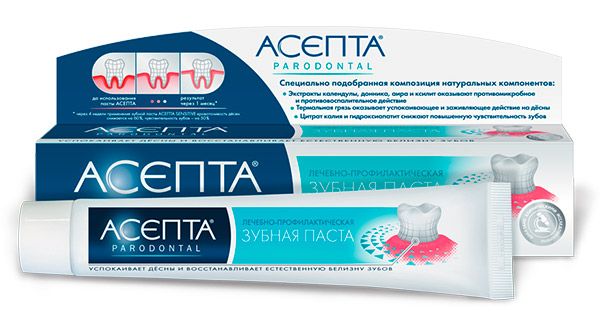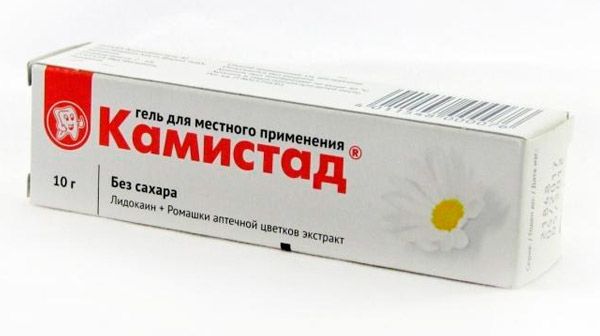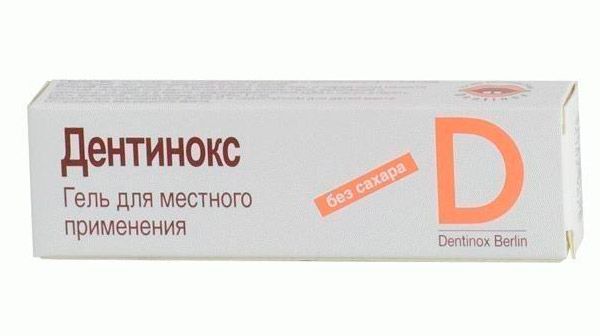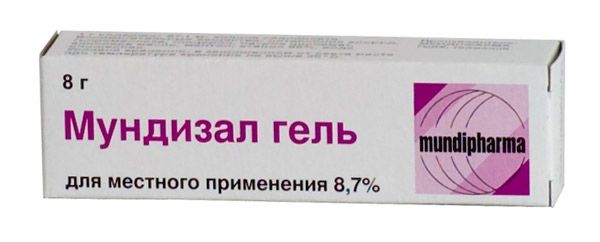Medical expert of the article
New publications
Preparations
Ointments and gels for gum inflammation
Last reviewed: 03.07.2025

All iLive content is medically reviewed or fact checked to ensure as much factual accuracy as possible.
We have strict sourcing guidelines and only link to reputable media sites, academic research institutions and, whenever possible, medically peer reviewed studies. Note that the numbers in parentheses ([1], [2], etc.) are clickable links to these studies.
If you feel that any of our content is inaccurate, out-of-date, or otherwise questionable, please select it and press Ctrl + Enter.
In case of gum inflammation, various ointments are recommended to be used only in combination with other forms of medications.
The thing is that they have a very oily base, so they are not so effective. In addition, gum ointment for inflammation is usually quickly swallowed and washed away with saliva.
Indications for the use of ointments for gums from inflammation
Gum ointments usually have the following main characteristics:
- They relieve pain.
- Eliminate or reduce bleeding gums.
- They treat inflammation.
- Eliminates unpleasant itching.
- Improve tissue healing.
- They have an antiseptic effect.
- Helps strengthen gums.
Gum ointments are used for the following diseases:
- Gingivitis.
- Stomatitis.
- Trophic ulcers in the oral cavity.
- Periodontitis.
- Various diseases that are associated with gum inflammation.
Release form
Many patients do not differentiate between two completely opposite concepts: “gel” and “ointment” when it comes to drugs for the treatment of gum inflammation.
A professional dentist can immediately name the main features of these two forms of release.
Ointments are usually made on a fat base, and gels are water-based. An ointment cannot penetrate the mucous membrane of the gums as easily as a gel. Because ointments are fatty, they cannot remain on the gums for a long time, so their work is not as effective.
Most consumers include in the list of ointments any preparations that are released in tubes and used externally. Such products have many advantages:
- They are very easy to use – you just need to apply them to your gums.
- They are sold in any pharmacy without a prescription.
- They are used externally, which helps reduce the risk of the main components entering the bloodstream and causing harm to the body.
- Ointments begin to act much faster than tablets, as they are immediately applied to the area of inflammation.
- They have virtually no side effects.
Pharmacodynamics and pharmacokinetics
Let's consider the pharmacodynamics and pharmacokinetics of ointments for gums against inflammation using the example of the popular drug "Metrogyl Denta".
This is a well-known antimicrobial and antiprotozoal drug. Its mechanism of action is based on the action of metronidazole on the transport proteins of anaerobic bacteria and protozoa that cause periodontal diseases. This leads to the rapid death of bacteria.
It exhibits activity against a wide range of gram-positive and gram-negative bacteria (Entamoeba histolytica, Trichomonas vaginalis, Fusobactenum spp., Eubacterium spp., Peptostreptococcus spp.).
Chlorhexidine - has antiseptic and bactericidal effects, affects aerobic and anaerobic bacteria.
The gel penetrates the oral mucosa very well, so it gives a positive result quite quickly. The bactericidal concentration of the product is achieved in fluids and most tissues of the body in a short period of time.
It is excreted as metabolites via the kidneys (80%) and 20% unchanged.
Names of ointments and gels for gums from inflammation
Asepta. The main active component of the drug is propolis.
This is a natural substance that copes well with gum inflammation, because it has an antimicrobial effect. It is used to treat gingivitis, stomatitis, periodontitis, trophic ulcers.

Apply the preparation to the inflamed gum immediately after brushing your teeth. Use a small amount of ointment, but try to apply it more or less evenly. Important: do not consume drinks or food for half an hour after applying the product. Use up to three times a day for one to two weeks. For prevention, use several times a year.
Solcoseryl. This drug is distinguished by the fact that it has a pronounced anti-inflammatory effect. This is explained by the fact that its active ingredient is a dialysate from the blood of small calves.

It is recommended to apply the ointment after brushing your teeth. Take a thin layer of the preparation and apply it to the gums. Sprinkle with clean cool water. As a rule, the product is applied up to five times a day (after each meal and before bedtime). The course continues until all symptoms of the disease disappear completely.
With the help of this drug, your mouth wounds will heal faster, and unpleasant and painful sensations will disappear.
Kamistad. The active ingredients of the drug are chamomile extract and lidocaine hydrochloride. It is recommended to use the product several times a day (mainly after meals) for seven days. Please note that after applying to the gums, they may become numb. This is due to the action of lidocaine.

The drug can be used to treat children over three years of age, but in this case it is not recommended to use it more than three times a day. The drug has both advantages and disadvantages: insufficient anti-inflammatory and antimicrobial effect, cannot be used for trophic ulcers.
Holisal
Today, this ointment is considered one of the most effective in treating gum inflammation. In addition, it helps reduce pain and has a bactericidal effect. The active ingredient of Holisal is choline salicylate. It has excellent analgesic and anti-inflammatory effects.

How to use the product correctly? First, try to brush your teeth thoroughly. Wash your hands and apply a small amount of ointment to a clean finger. Rub the product into your gums with light massage movements.
To reduce pain, it is recommended to apply the ointment before each meal. The course of treatment continues until all symptoms disappear.
Metrogyl Denta
This is an excellent and quite popular gel that is used to relieve inflammation and bleeding gums. The composition of the drug contains the following active components: chlorhexidine and metronidazole. To use the gel, you must first brush your teeth, then carefully apply a thin layer to the gums.

Metrogyl Denta can be used both for prevention and treatment (twice a day for one to two weeks). Remember that doctors do not recommend using the drug too often, as it can cause dysbacteriosis of the oral cavity.
Gum ointment for inflammation for children
Various gum ointments are also used in pediatric dentistry. As a rule, they are used during teething. Today, you can find preparations based on lidocaine and without it.
Dentinox. The active ingredients of the drug are: lidocaine hydrochloride and infusion of medicinal chamomile flowers, polidocanol. Thanks to this composition, the product copes well with inflammation (chamomile extract), relieves pain (lidocaine and polidocanol).

Apply to gums in small amounts as soon as the first symptoms of teething appear. Do not use if you are intolerant to at least one component of the preparation, have damage to the oral mucosa, or have diabetes.
Mundizal. The active ingredients of the drug are choline salicylate and cetyl citrate. Can be used for children aged one year and older.

The drug has good anti-inflammatory, analgesic, antiseptic and antimicrobial effects. It is used mainly for infectious diseases of the oral cavity.
Approximately 1 cm of ointment is applied to the gums three to four times a day. The course of treatment continues until the signs of the disease disappear. It is not recommended to use if you are intolerant to the components of the drug. Sometimes a burning sensation may occur at the site of application.
Method of administration and dosage
The dosage of any medication is prescribed by a specialist, based on the individual characteristics of each individual case.
Before applying to the gums, it is necessary to brush your teeth and wash your hands. Squeeze about 1 cm of ointment onto your finger and rub it into the inflamed areas with light massage movements. After this, it is advisable not to eat or drink for half an hour to an hour. As a rule, it is used after each meal and at night. The course of therapy is from one week.
Using gum ointments for inflammation during pregnancy
Most gum ointments for inflammation are contraindicated in the first trimester of pregnancy, as well as during breastfeeding. Some herbal preparations can be used by pregnant patients, but only under strict medical supervision.
Contraindications for use and side effects of ointments for gums from inflammation
Since ointments for gum inflammation are usually applied externally and are not absorbed into the systemic bloodstream in large quantities, there are no serious contraindications to their use. It is important not to use the drugs if you have an individual intolerance to their main components.
Patients who use gum ointments for inflammation indicate that in some cases (if the drug contains lidocaine), after application, the gums and tongue begin to go numb. A burning and tingling sensation in the oral cavity may also be felt.
Overdose and interactions with other drugs
If the drug is used in recommended doses, overdose is not observed.
Gum ointments for inflammation are used locally. In such cases, minor interactions with other drugs are possible. Remember that caution must be exercised when using such products simultaneously with various indirect anticoagulants (for example, warfarin).
Concomitant administration with phenobarbital and phenytoin reduces the bactericidal activity of metronidazole due to the accelerated metabolism of the latter.
Taking cimetidine can suppress the metabolism of metronidazole, which leads to an increase in the concentration of the latter in the blood.
Storage conditions and shelf life
As a rule, it is recommended to store such ointments at a temperature not exceeding +30 degrees Celsius. Do not freeze or give to small children.
Usually, gum ointments for inflammation are stored for about two to three years. After this period, it is highly recommended not to use the drug.
Attention!
To simplify the perception of information, this instruction for use of the drug "Ointments and gels for gum inflammation" translated and presented in a special form on the basis of the official instructions for medical use of the drug. Before use read the annotation that came directly to medicines.
Description provided for informational purposes and is not a guide to self-healing. The need for this drug, the purpose of the treatment regimen, methods and dose of the drug is determined solely by the attending physician. Self-medication is dangerous for your health.


 [
[